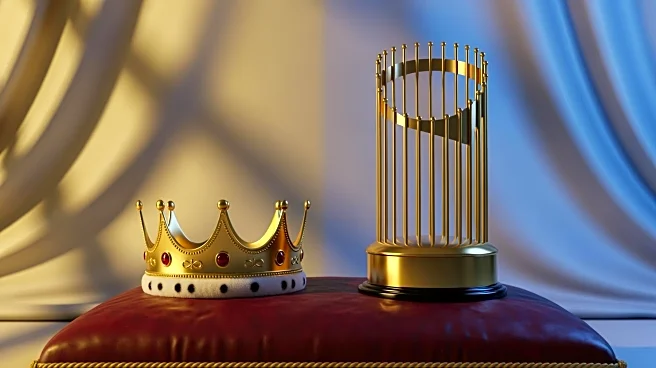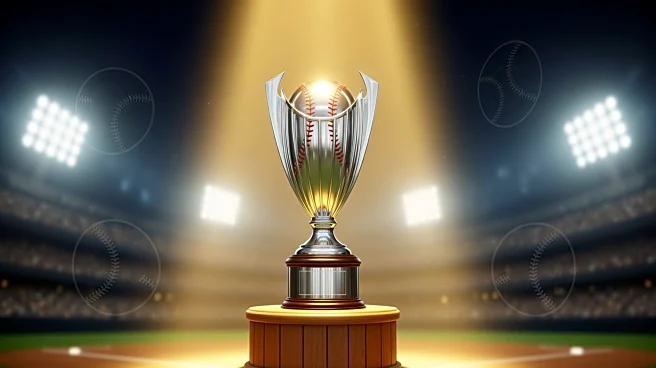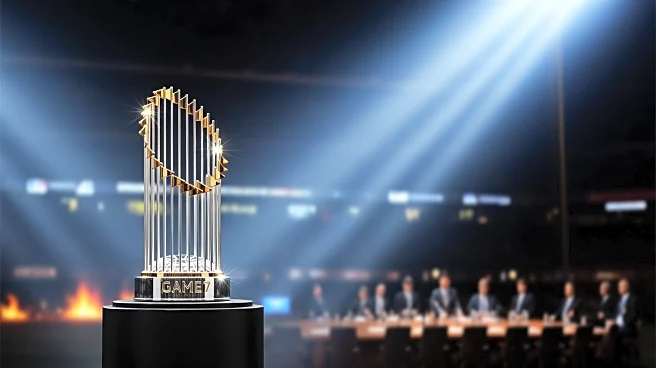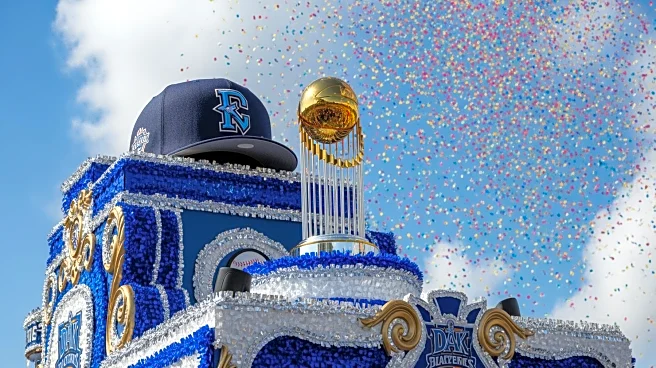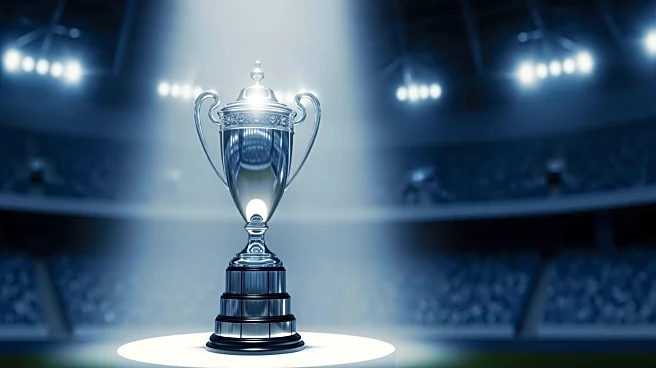What's Happening?
Prince Harry, the Duke of Sussex, has issued an apology to Canada for wearing a Los Angeles Dodgers hat during a World Series game against the Toronto Blue Jays. The incident occurred during Game 4 of the series
held in Los Angeles, where Harry was seen sporting the Dodgers' bright blue cap. He explained in a CTV interview that he wore the hat under duress, as it was offered to him by the Dodgers' owner when he was invited to the game. The choice of headgear sparked criticism from Canadians, who felt he should have shown allegiance to the Toronto Blue Jays, the only Canadian team in Major League Baseball. Prince Harry's father, King Charles, is the head of state of Canada, which is part of the Commonwealth. During the interview, Harry humorously noted that he would wear a Blue Jays hat from now on, especially since he was given one while meeting with Canada's oldest veterans.
Why It's Important?
The apology from Prince Harry highlights the sensitivity surrounding national symbols and allegiances, especially in the context of sports and international relations. As a member of the British royal family, Harry's actions are often scrutinized, and his choice to wear a Dodgers hat was seen as a slight to Canadian fans and the Commonwealth. This incident underscores the cultural and diplomatic expectations placed on public figures, particularly those with ties to multiple nations. The situation also reflects the broader dynamics of sports fandom, where allegiances can become a point of contention, influencing public perception and media narratives.
What's Next?
Prince Harry's decision to wear a Blue Jays hat in future games may help mend relations with Canadian fans and demonstrate his support for the Commonwealth nation. As he continues his visits with military veterans in Canada, his actions will likely be closely watched to see how he navigates the expectations of his role. The incident may also prompt discussions on the role of public figures in sports diplomacy and the importance of cultural sensitivity in international contexts.
Beyond the Headlines
This event sheds light on the complex relationship between the British royal family and the Commonwealth nations, where symbolic gestures can carry significant weight. It also raises questions about the influence of sports in diplomatic relations and how public figures can leverage their visibility to foster goodwill or inadvertently create tension. The cultural significance of sports hats and team allegiances may seem trivial, but they can become powerful symbols in the context of national identity and international relations.


